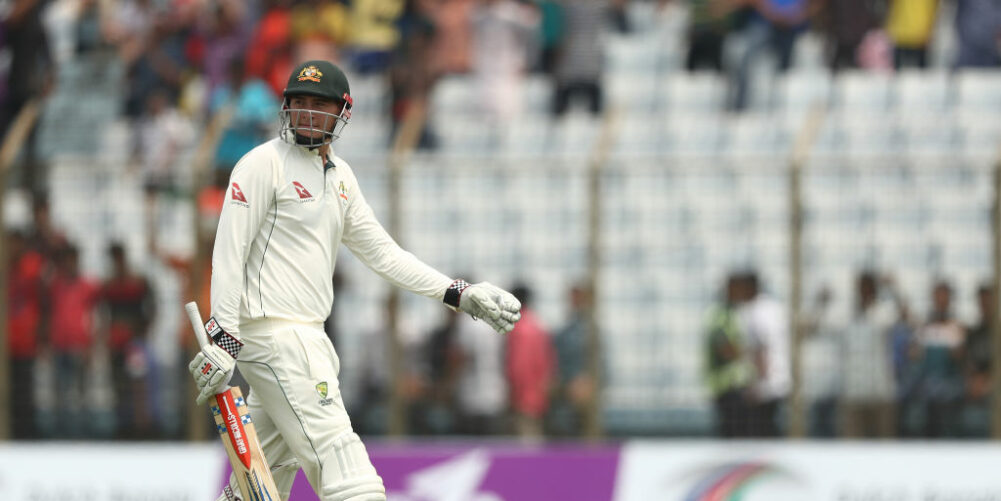There have been the usual verbals thrown around in the build-up to this winter’s Ashes, mostly, it has to be said, by the Australians. The reason for their bullishness factors around the three-pronged pace attack that looks likely to take the field in Brisbane next week for the first time in a Test match.
There is a lot of excitement about the collective strength of Mitchell Starc, Josh Hazlewood and Pat Cummins, but the home side and our somewhat parochial media would do well to remember that England hold the Urn. They know how to play good cricket and I don’t think they will be as easy to shift as the tourists were four years ago when the Australians blew them away 5-0.
The bowling aside, and only on paper, the two sides are very similar. So if I am being asked here and now for my verdict, I would have to say Australia are rightly favourites and they should win because their attack has the firepower to bag the crucial sessions. Plus, it’s just a simple fact of life that winning away in Australia remains one of the toughest tests for any side and history is well against England in that case.
But getting the bowlers onto the park at the Gabba next week is one thing, keeping them fit through to the first week of January is another. There will be bumps and bruises along the way. Of the trio, Starc and Cummins possess the serious pace, deliveries clocking into the mid-nineties that really do unsettle players. When the speed gun ticks into those numbers, panic sets in and it spreads to the opposition changing room. Early nineties is quick; mid-nineties is dangerous. The quicker it comes down, the heavier your feet feel!
I know England have been working hard in the nets with the ‘dog-throwers’ to help prepare them for the challenge, but they should not rule out the danger posed by the slowest of the three seamers, Hazlewood. He, for me, remains Australia’s best chance of regaining the Urn because while he is no slouch with an average speed of 86mph and a quickest ball of around 90, it is his ability to hit the deck in those areas of uncertainty. His accuracy is superb. Starc and Cummins can land it on a dustbin, but Hazelwood puts it on a dinner plate.
Aside from keeping them all fit, there is a worry with the back-up supply after Nathan Coulter-Nile and Jason Behrendorff went down with fresh back problems. The selectors don’t have the luxury of leaning on resources, although Jackson Bird is with the squad in Brisbane and despite his pace not being anything that would send shivers down the spine, he has the nous to take wickets at the highest level, especially on flat pitches. He should not be underestimated and he can be called on to do a very effective job.

Batting wise, while England have an inexperienced and untested line-up, they at least have their ducks in a row and the order settled. That’s not something Australia have and selection will have been a headache this week.
Opener Matt Renshaw is out of form, there were a plethora of candidates to consider for the number six spot, while the wicket-keeper remains a headache that won’t go away.
I write this before news of the squad broke, so it’s a message more for the series rather than just Brisbane, but I always believed Renshaw had to keep his place. He was given the job to complement David Warner’s belligerence and while he came unstuck in the sub-continent – like so many Australians before – he has shown the right temperament to dig in and score runs on home soil.
Six remains a puzzle that will only be fixed once someone makes it their own with big runs, but the ‘keeper is the sticky one. You cannot underplay the role Brad Haddin played four years ago in preventing collapses and giving the Australian bowlers the freedom to tear in and let it go. In four of the five matches, Haddin took the game away from England’s attack – from scores of around 150-5 – and protected the tail superbly.
But the Aussies don’t have that reliable axis this time around because neither Matthew Wade or Peter Nevill are deemed strong enough with the bat. My call has long been for Cameron Bancroft to take the gloves. He’s a fine opener, but why can’t he bat at seven and shelter the tail? Starc and Cummins can both play shots, but you need someone alongside them to get them through the early blows.
Bancroft is decent enough with the gloves. He’s not as tidy as Nevill or South Australia’s Alex Carey, but you have to weigh it up: do you want a consistent guy at seven who can get you out of danger with a steady amount of runs that gives your attack something to work with, or do you want a gloveman who will keep hold of the crucial catches that keeps the opposition against the ropes. Bancroft offers a nice medium here.
So there are questions to be asked, but Australia have the guns to take back the Urn. I would say 3-1, but that’s a tight 3-1. It’s all about the big sessions. When I toured England in 2009, we had more guys scoring hundreds and more taking five-wicket hauls, but England enjoyed the game-changing moments and when they had us down, they kept us down.















